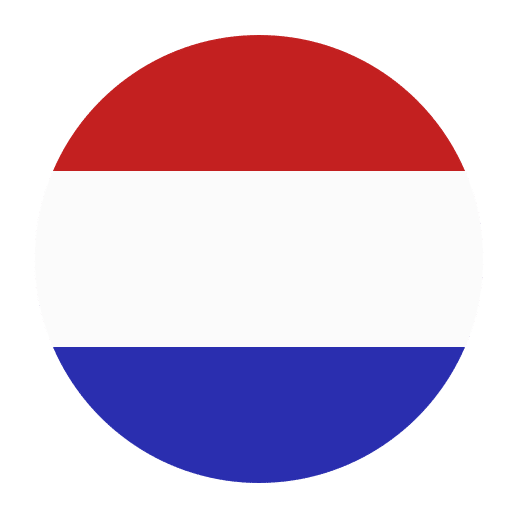Learning a new language can be an exciting yet challenging journey. Dutch, with its unique sounds and structure, is no exception. Whether you’re planning to move to the Netherlands, want to connect with Dutch-speaking friends, or simply enjoy the challenge of learning a new language, setting achievable goals is a crucial step in your language learning journey. In this article, we will discuss how to set realistic and attainable goals for learning Dutch, ensuring that you stay motivated and make steady progress.
Understanding SMART Goals
Before diving into the specifics of Dutch, it’s essential to understand the concept of SMART goals. SMART stands for Specific, Measurable, Achievable, Relevant, and Time-bound. This framework helps in breaking down your language learning objectives into manageable steps.
– **Specific**: Clearly define what you want to achieve. Instead of saying, “I want to learn Dutch,” specify, “I want to hold a basic conversation in Dutch.”
– **Measurable**: Ensure that you can track your progress. For example, “I want to learn 50 new Dutch words each week.”
– **Achievable**: Set realistic goals. If you’re a beginner, aiming to read Dutch novels in a month might be too ambitious.
– **Relevant**: Your goals should align with your reasons for learning Dutch. If you’re learning for travel, focus on conversational skills rather than academic language.
– **Time-bound**: Set a deadline for your goals. For instance, “I want to be able to order food in Dutch within three months.”
Setting Your Dutch Learning Goals
1. Assess Your Current Level
Before setting goals, it’s essential to assess your current Dutch proficiency. Are you a complete beginner, or do you have some basic knowledge? There are various online tests and resources available that can help you determine your level. Knowing where you stand will help you set realistic and achievable goals.
2. Define Your Motivation
Understanding why you want to learn Dutch will help you set relevant goals. Are you learning Dutch for travel, work, or to connect with friends and family? Your motivation will guide your goal-setting process. For instance, if you’re learning Dutch for work, you might focus on business vocabulary and formal language. If it’s for travel, you might prioritize conversational skills and practical phrases.
3. Break Down Your Goals
Once you have a clear understanding of your current level and motivation, break down your overarching goal into smaller, manageable objectives. For example:
– **Short-term goal**: Learn basic greetings and introductions in Dutch within the first month.
– **Medium-term goal**: Be able to hold a simple conversation about daily activities within three months.
– **Long-term goal**: Reach an intermediate level where you can understand and participate in more complex conversations within a year.
Breaking down your goals helps in preventing overwhelm and allows you to celebrate small victories along the way.
4. Create a Study Plan
Having a structured study plan is crucial for consistent progress. Here’s a sample study plan for beginners:
– **Daily practice**: Spend at least 20-30 minutes every day on vocabulary and grammar exercises.
– **Weekly goals**: Set weekly goals such as learning a specific number of new words or mastering a particular grammar rule.
– **Monthly check-ins**: At the end of each month, review what you’ve learned and adjust your study plan if needed.
Utilizing Resources Effectively
1. Language Apps
Language learning apps like Duolingo, Babbel, and Memrise offer structured courses that can help you build your Dutch skills progressively. These apps are great for learning vocabulary, practicing pronunciation, and reinforcing grammar.
2. Online Courses and Tutors
Enrolling in an online course or hiring a tutor can provide more personalized guidance. Websites like Coursera, Udemy, and iTalki offer Dutch courses and one-on-one tutoring sessions. A tutor can give you immediate feedback and tailor lessons to your specific needs and goals.
3. Immersive Techniques
Immersion is one of the most effective ways to learn a language. Here are some immersive techniques you can incorporate into your study plan:
– **Watch Dutch TV shows and movies**: Start with subtitles in your native language and gradually switch to Dutch subtitles.
– **Listen to Dutch music and podcasts**: This helps with pronunciation and understanding the rhythm of the language.
– **Practice with native speakers**: Join language exchange groups or find a language partner to practice speaking.
Tracking Your Progress
1. Keep a Language Journal
Maintaining a language journal can help you track your progress and reflect on your learning journey. Write down new words, phrases, and grammar rules you’ve learned. Additionally, jot down any difficulties you encounter and how you plan to overcome them.
2. Regular Assessments
Periodically assess your progress by taking online tests or quizzes. This will help you identify areas that need improvement and adjust your study plan accordingly. Celebrating small achievements, like completing a level on a language app or successfully holding a conversation, can boost your motivation.
3. Set Milestones
Setting milestones can make your language learning journey more tangible. For example, aim to finish a beginner’s course within three months or be able to read a children’s book in Dutch by the end of six months. Milestones provide a sense of accomplishment and motivate you to keep going.
Staying Motivated
1. Join a Community
Joining a language learning community, either online or in-person, can provide support and motivation. Platforms like Reddit, Facebook groups, and language learning forums offer spaces where you can share your progress, ask questions, and connect with fellow learners.
2. Celebrate Small Wins
Language learning is a marathon, not a sprint. Celebrate small wins along the way, whether it’s learning a new phrase, understanding a Dutch song, or having a successful conversation. Recognizing these achievements will keep you motivated and positive.
3. Stay Consistent
Consistency is key to language learning. Even on days when you feel less motivated, try to do something related to Dutch, even if it’s just for a few minutes. Consistent practice reinforces what you’ve learned and builds a strong foundation.
Adapting Your Goals
1. Be Flexible
Language learning is not always a linear process. There will be times when you progress rapidly and times when you feel stuck. Be flexible with your goals and adjust them as needed. If you find a particular goal too challenging, break it down into smaller steps or extend the timeline.
2. Seek Feedback
Feedback from native speakers, tutors, or language exchange partners can provide valuable insights into your progress. Don’t be afraid to make mistakes and seek constructive criticism. This will help you refine your skills and stay on track with your goals.
3. Reflect and Adjust
Regularly reflect on your language learning journey. What strategies are working for you? What challenges are you facing? Use this reflection to adjust your goals and study plan. Language learning is a dynamic process, and being adaptable will help you achieve your objectives.
Common Challenges and How to Overcome Them
1. Pronunciation
Dutch pronunciation can be tricky, especially for English speakers. Focusing on phonetics and practicing with native speakers can help. Use resources like YouTube tutorials, pronunciation guides, and language apps with voice recognition features to improve your pronunciation.
2. Grammar
Dutch grammar has its complexities, but breaking it down into manageable chunks can make it more approachable. Focus on one grammar rule at a time and practice with exercises and examples. Resources like grammar books, online courses, and language apps can provide structured grammar lessons.
3. Vocabulary Retention
Remembering new words can be challenging. Use mnemonic devices, flashcards, and spaced repetition techniques to enhance vocabulary retention. Apps like Anki and Quizlet are excellent tools for creating and reviewing flashcards.
Conclusion
Setting achievable Dutch learning goals is a vital step in your language learning journey. By understanding your current level, defining your motivation, breaking down your goals, and creating a structured study plan, you can make consistent progress. Utilize resources effectively, track your progress, and stay motivated by celebrating small wins and joining a community. Remember to be flexible and adapt your goals as needed. With dedication and perseverance, you will find yourself mastering Dutch and achieving your language learning objectives. Good luck, and happy learning!

